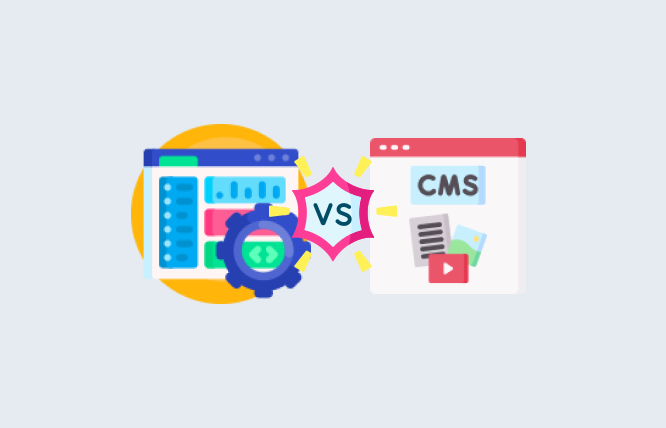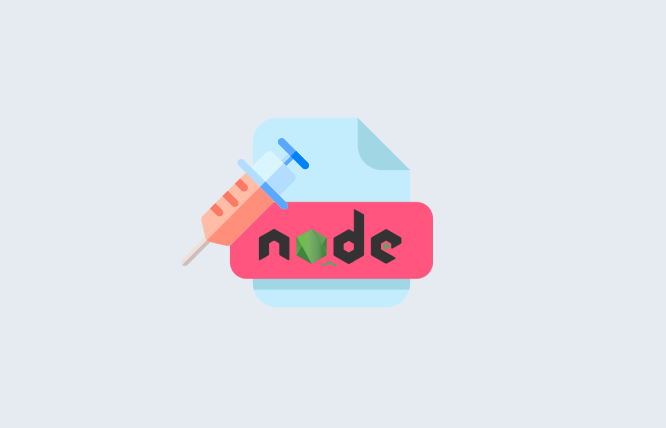Headless CMS vs. Traditional CMS : Your Guide to a Better CMS
Content management systems or CMS play a vital role in the growth of every organisation. Studies have shown that 59% of organisations are using multiple CMS systems to minimise delivery risks. Furthermore, the number of organisations that are using four CMS has increased from 14% in 2022 to 27% in 2024.
With new advancements, the concept of headless CMS is slowly gaining popularity and more organisations are looking towards leveraging headless CMS to improve their business processes.
In this article we will discuss all the aspects pertaining to headless CMS vs. Traditional CMS, what to look for when choosing a specific CMS and the importance of each.
Importance of a CMS in Every Organisation
CMS development services provide an intuitive interface and a range of tools to facilitate content creation, editing, organisation, and publication. The primary purpose of a CMS is to streamline the process of managing digital content, making it easier for individuals and organisations to maintain websites, blogs, online stores, and other online platforms.
Here are some key aspects of a CMS:
Content Creation
CMS platforms offer built-in editors or WYSIWYG (What You See Is What You Get) interfaces that allow users to create and format content easily. Users can add text, images, videos, links, and other multimedia elements to their web pages without writing code.
Content Organisation
CMSs provide tools for organising content into hierarchical structures, such as pages, categories, tags, and folders. This helps users maintain a logical and consistent layout for their website and makes it easier for visitors to navigate and find relevant information.
Content Management
CMSs enable users to manage their content efficiently by providing features such as version control, content scheduling, content reuse, and content moderation. Users can edit, update, and delete content as needed, track changes over time, and collaborate with team members on content creation and review.
User Roles and Permissions
CMSs allow administrators to define user roles and permissions to control who can access, edit, and publish content on the website. This ensures security and accountability by limiting access to sensitive areas and functions based on user roles and responsibilities.
Customisation and Extensibility
CMS platforms offer flexibility for customisation and extensibility to meet the unique needs of different users and organisations. Users can choose from a variety of themes, templates, and plugins to customise the design and functionality of their website and add new features and capabilities as needed.
SEO and Performance Optimisation
Many CMSs include built-in features and tools for search engine optimisation (SEO) and performance optimisation to help improve the visibility and performance of websites in search engine rankings. This includes features such as metadata management, XML sitemap generation, mobile responsiveness, and page speed optimisation.
Integration and Compatibility
CMS platforms support integration with third-party services, tools, and applications to extend their functionality and integrate with existing workflows and systems. This includes integration with e-commerce platforms, social media networks, email marketing services, analytics tools, and more.
Headless CMS vs. Traditional CMS
Before we understand what to choose between headless and traditional CMS, we need to understand how each of them differ from each other. Following are the different aspects of Headless CMS vs. Traditional CMS.
Architecture:
- Traditional CMS: Traditional CMS platforms are monolithic systems where the frontend presentation layer (the part visible to users) and the backend content management functionality are tightly coupled. Content is stored, managed, and delivered in a single system.
- Headless CMS: Headless CMS decouples the content management backend from the frontend presentation layer. Content is stored and managed in the backend, but it’s delivered to the frontend through APIs (Application Programming Interfaces), allowing developers to use any frontend technology or framework to display the content.
Flexibility:
- Traditional CMS: Traditional CMS platforms offer built-in templates and themes for frontend design, limiting flexibility and customization options. Developers have less control over the frontend presentation layer.
- Headless CMS: Headless CMS provides greater flexibility and freedom for frontend development. Developers can use their preferred frontend technologies (such as React, Angular, or Vue.js) to create highly customized and interactive user interfaces.
Content Delivery:
- Traditional CMS: In traditional CMS, content is tightly coupled with the presentation layer, meaning that content and presentation are served together. Changes to content or design may require updates to the entire platform.
- Headless CMS: Headless CMS separates content from presentation, allowing content to be delivered independently of the frontend. Content can be accessed and displayed on various devices and channels, including websites, mobile apps, IoT devices, and more, without affecting the backend infrastructure.
Scalability:
- Traditional CMS: Traditional CMS platforms may face limitations in scalability due to the monolithic architecture, making it challenging to handle large volumes of traffic or diverse content delivery requirements.
- Headless CMS: Headless CMS offers greater scalability and performance optimization possibilities. With the separation of concerns between content management and presentation, developers can scale each layer independently, allowing for more efficient resource allocation and improved performance.
Development Workflow:
- Traditional CMS: Traditional CMS platforms typically follow a linear development workflow, where content creation, design, and development are closely linked. This can lead to dependencies and bottlenecks in the development process.
- Headless CMS: Headless CMS enables a more flexible and agile development workflow. Content creators can work independently of frontend developers, allowing for parallel development and faster iteration cycles. This separation of concerns enhances collaboration and streamlines the development process.
Factors to Consider When Choosing Headless CMS vs. Traditional CMS
When choosing between a Headless CMS vs. Traditional CMS, several factors should be considered to ensure that the chosen solution aligns with your business needs and goals. Here are some key factors to consider:
Content Management Requirements
Evaluate your content management requirements, including the types of content you need to manage, the frequency of updates, and the level of customization required. Traditional CMS platforms may offer more out-of-the-box features for content management, while headless CMS platforms provide greater flexibility and customization options.
Frontend Flexibility
Consider the level of frontend flexibility you require for your website or application. Traditional CMS platforms tightly couple content management with frontend presentation, making it easier to manage content and design in a unified environment. In contrast, headless CMS platforms decouple content management from frontend presentation, allowing for greater frontend flexibility and the use of modern development frameworks.
Scalability
Assess your scalability requirements, including expected traffic volumes and future growth projections. Traditional CMS platforms may have limitations in scalability due to their monolithic architecture, while headless CMS platforms offer greater scalability and optimization potential, particularly for high-traffic or enterprise-level applications.
Developer Experience
Consider the expertise and preferences of your development team. Traditional CMS platforms often have user-friendly interfaces and built-in tools that simplify content management and website development, making them suitable for teams with varying levels of technical expertise. Headless CMS platforms require more technical knowledge and development effort but offer greater flexibility and control for experienced developers.
Integration Capabilities
Evaluate the integration capabilities of the CMS platform with other systems and third-party services. Traditional CMS platforms may offer built-in integrations with common tools and services, while headless CMS platforms provide API-driven architectures that enable seamless integration with a wide range of applications and services.
Future-Proofing
Consider the long-term viability and future-proofing of your chosen CMS platform. Traditional CMS platforms may be more established and widely adopted, offering stability and a large community of users and developers. However, headless CMS platforms represent the future of content management, with growing adoption and support for modern development practices and emerging technologies.
Conclusion
Businesses understand the importance of headless CMS and how it can impact the growth in an efficient manner. Based on our research, headless CMS makes the most sense for organisations, with studies showing an increase of 61% in ROI for businesses that are using headless CMS.
If you are looking for an expertly developed headless CMS system, FuturByte has got you covered. Contact us for a free consultation today.
Other Services Offered By FuturByte
FuturByte is considered one of the best CMS and custom CRM development company, ready to be your tech partner. Apart from CMS development we also offer:
- HR Software Development Services
- ERP System Development Services
- Learning Management Systems for Business
- Cloud POS Software Development Services
Frequently Asked Questions
Headless CMS offers greater flexibility and scalability, as content can be delivered to any frontend or device via APIs. It also enables developers to use modern development frameworks and technologies, resulting in faster and more dynamic websites and applications.
Traditional CMS platforms typically offer user-friendly interfaces and built-in tools for content management and website development. They are well-suited for users with limited technical expertise and provide a unified environment for managing content and design.
The choice between headless and traditional CMS depends on your project requirements and objectives. If you need flexibility, scalability, and the ability to deliver content across multiple channels and devices, a headless CMS may be more suitable. However, if you prioritize ease of use, integrated design capabilities, and a streamlined content management experience, a traditional CMS may be the better option.
Yes, it is possible to migrate from a traditional CMS to a headless CMS, but it requires careful planning and execution. The migration process involves exporting content from the existing CMS, restructuring it for use with the headless CMS, and updating frontend templates and components to consume content via APIs.
While headless CMS offers many advantages, it may not be the best choice for every project. Some limitations include the need for more technical expertise to implement and manage, potential complexity in integrating with other systems and services, and the possibility of increased development effort and cost.
Have questions or feedback?
Get in touch with us and we‘l get back to you and help as soon as we can!





